By Meor Amri Meor Ayob
Today’s article I will focus and provide a hands-on opinion on IWC Ingenieur Reference IW3236 watch, commonly known as The Ingenieur Automatic Mission Earth and compare it with its replacement, the Ingenieur Reference IW3239. The particular IW3236 model that I own is the IW323604 version.

This watch is substantial. The case diameter is 46 mm (excluding crown) while its height is 15 mm. With such dimensions, you need to have a good size wrist to carry it confidently. In my case, my wrist is 7.5 inch in circumference and yet, the watch still looks sizeable.
The Gérald Genta design philosophy can still be seen in this particular example. The original Ingenieur designed by Genta (the SL1832 Ingenieur and its reproduction, the IW3227) was just 42.5 mm in diameter. This supersized version has two notable additions to make it pleasing to the eye. The first are the crown guards and the second is the lack of sharpness on the edges of the casing. The former makes this watch looks sporting while the second helps it from not getting easily snagged against cuffs etc.
In the picture below, the 15 mm height of the case is not that obvious because it is masked by the substantially thick stainless steel bracelet. Due to the smoother edges, it moves in and out of shirt cuffs easily.
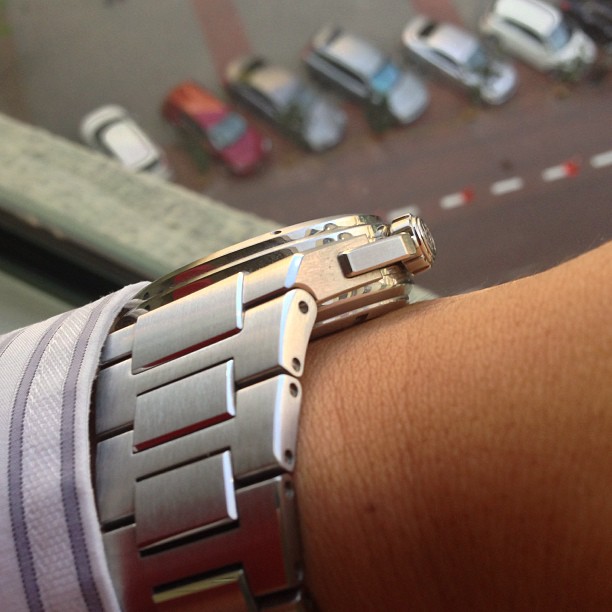
The Ingenieur Automatic Mission Earth was designed for the outdoors. Its in-house movement has an integrated shock absorber. Water-resistant to 12 bar, this watch can withstand magnetic fields of up to 80,000 amperes per metre. The additional soft-iron inner casing to protect the movement from magnetic influences is major reason for the height of the watch.
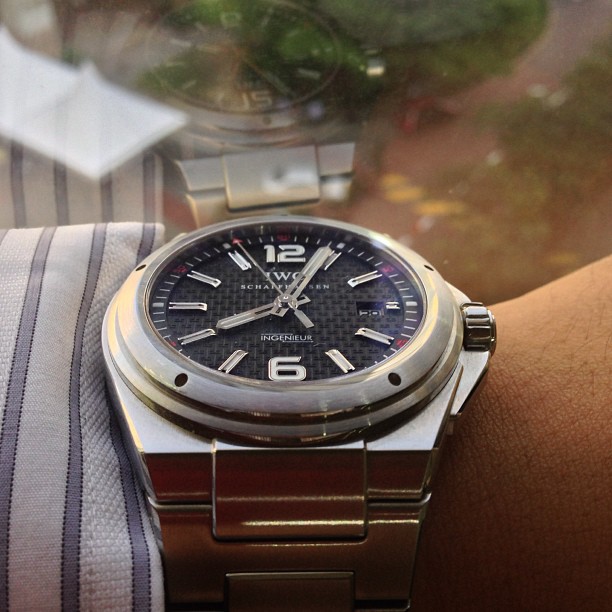
Inside this watch ticks IWC’s in-house caliber 80110 movement. The Pellaton winding system is the cornerstone of the 80000-calibre family. This winding system, designed by Albert Pellaton in 1950 features IWC’s first automatic winding mechanism. The innovative pawl-winding system replaces the traditional reciprocal gearing and patented by IWC.
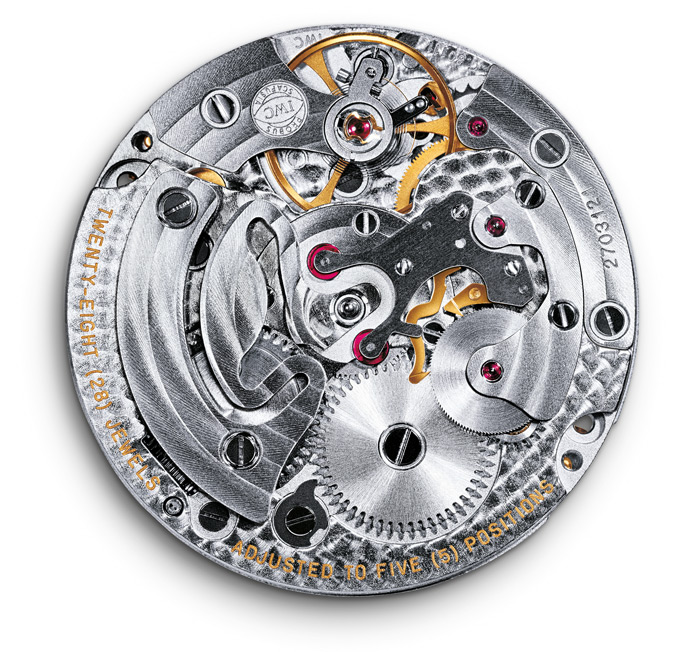
The bracelet is not like any bracelet you expect to find anywhere. In the picture below, the bracelet is flushed to the skin and the clasp integrates easily with the end-links. A heavy piece of engineering design, it hides a very important mechanism.
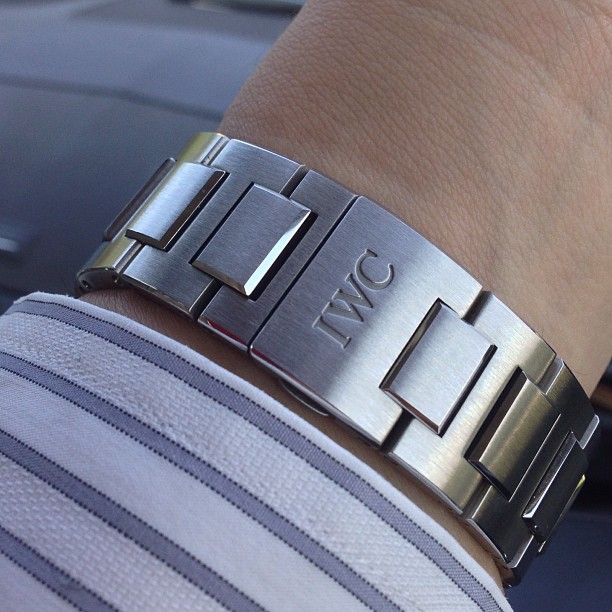
One of the most time consuming (and stressful, if I could add!) exercise is sizing. The thought of bringing hard tools to help disengage the bracelet pins while requiring a steady hand and confidence is scary. The likelihood of scratching is very high.
To this end, IWC has incorporated a very ingenious mechanism in every link in the bracelet which allows one to disengage the bracelet pins with just a simple push with a thin object (such as a wooden toothpick). In the photo below, you will note the circle at the centre of every link. Push on the center of the point and the link pins will disconnect and you can start your resizing quickly and effortlessly. Having this capability does have its cost. A replacement bracelet could set you back by a couple of thousand USD and it contributes substantially to the overall weight of the watch. My advice: if you ever get a chance to buy this watch, chose the bracelet model. It is always cheaper to get leather or rubber replacement then the other way around.
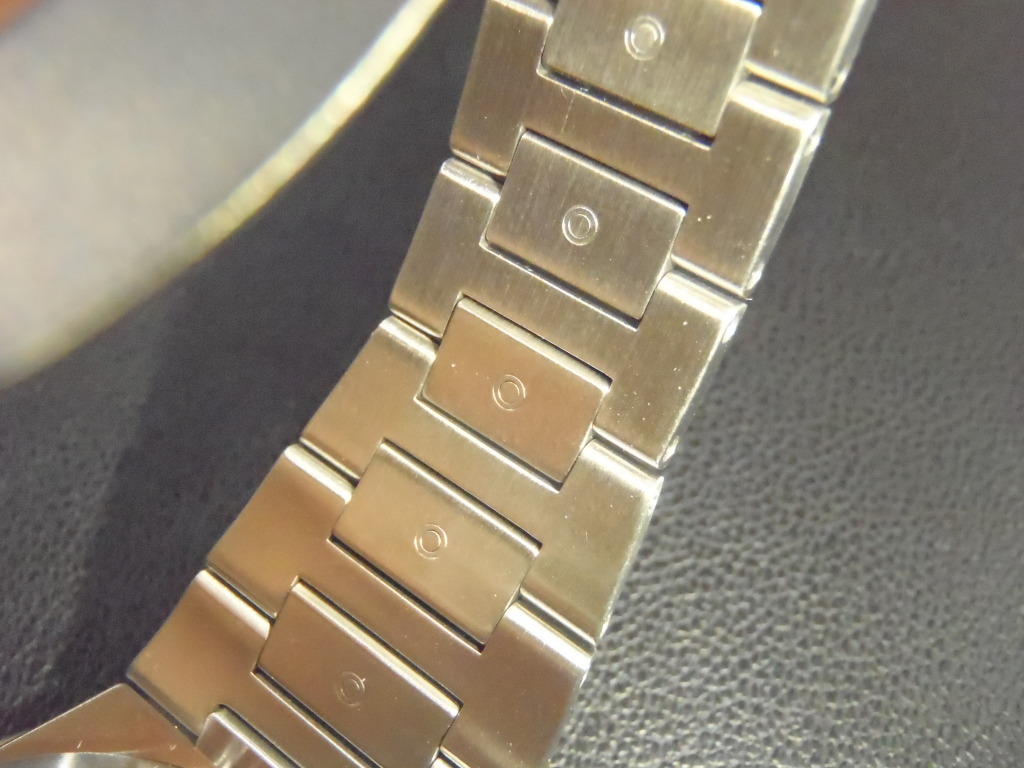
This watch does not have a display case back. The steel case back is also plain without any graphics etched on it.
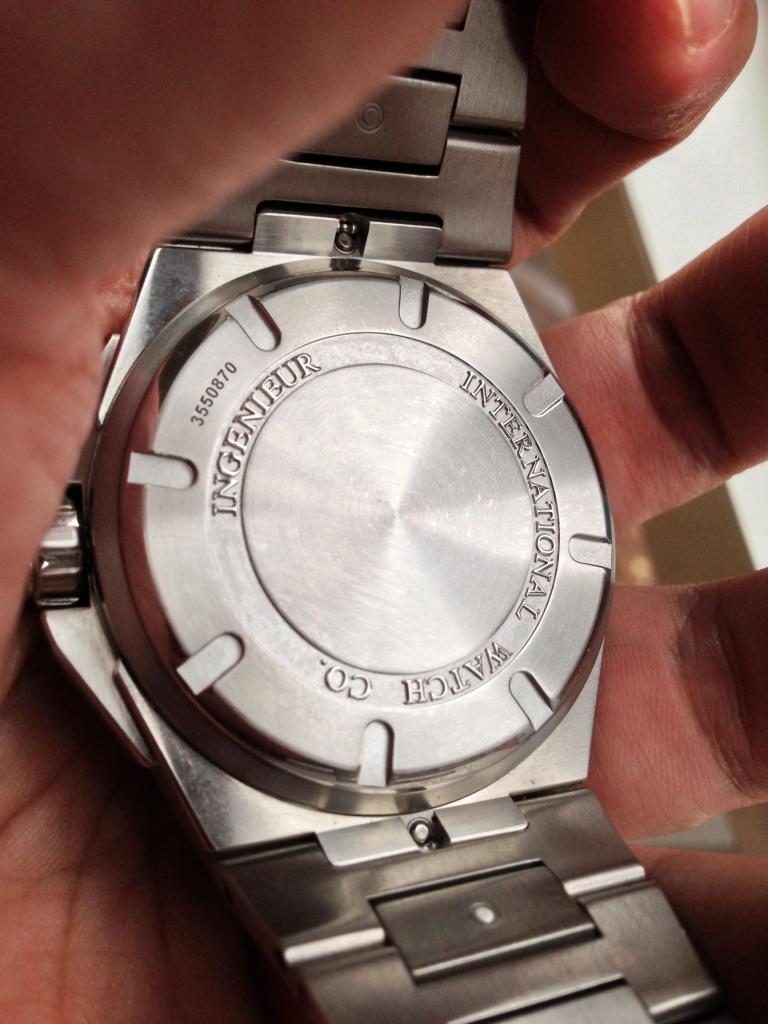
Despite its size and weight, this watch is comfortable to wear. More importantly, it can be worn during formal functions as well. This makes this watch an all-rounder.
So, how does it compare the latest Ingenieur launched by IWC? The latest incarnation of the Ingenieur is the IW3239 version. This particular piece is smaller at just 40 mm in diameter and a case height of 10 mm. It is a smaller version of the bigger IW3236 with all the complications intact; such as the water rating and the anti-magnetic capabilities.
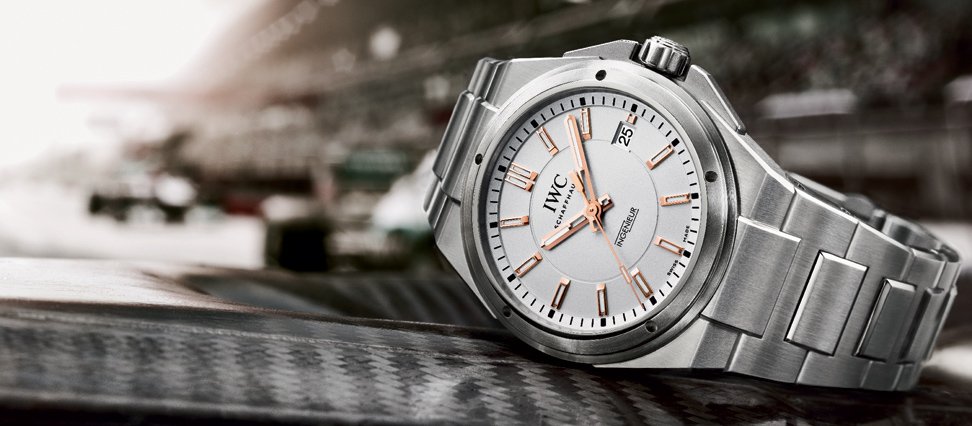
However, this particular model is handicap by the movement. For this series, the movement chosen is the IWC caliber 30110, which is but a modified ETA 2892. This is a disappointment to watch aficionados out there (although the number of jewels used should not be used as a benchmark but for a watch positioned in the high-end category, having just 21 jewels when the predecessor had 28 jewels is telling).
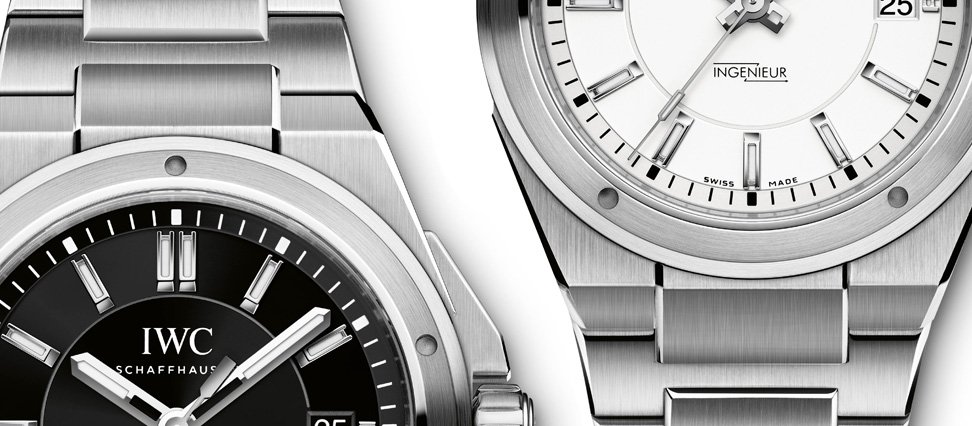
By catering to those that can only carry a smaller watch, IWC needed to sacrifice something. Granted, from a design perspective, everything looks the same plus the option of 3 different dials should keep a lot of people happy, but to those that have been following the Ingenieur brand since its inception, it looks more like a reversal than a progression.
Personally, I disagree with IWC’s strategy on this. If the only purpose is make more money – increase prices but lower specifications – discontent will grow and effect brand franchise in the long run.



